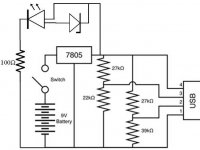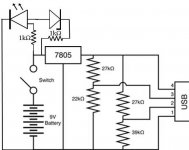A few years back I remember coming across an LED that changed color based on the voltage it was fed. I have no idea what this type of LED was called but I need a few of them.
The max voltage I will feed to them is 9v, and I want to use them as an indicator of battery level (ie as my 9v battery drains, the LED changes color and eventually turns off).
Any ideas on where I can get such a beast?
The max voltage I will feed to them is 9v, and I want to use them as an indicator of battery level (ie as my 9v battery drains, the LED changes color and eventually turns off).
Any ideas on where I can get such a beast?




